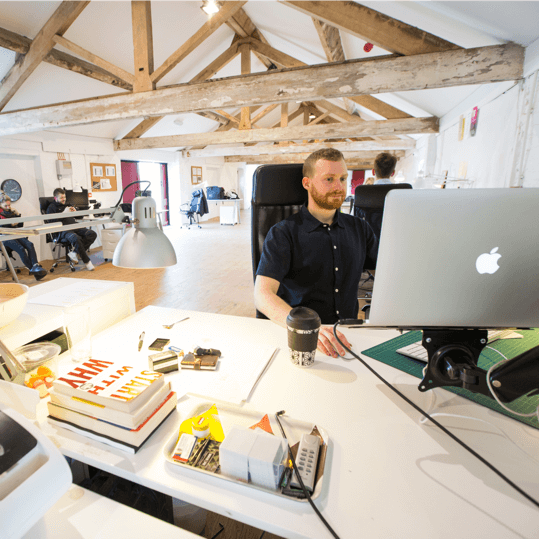In today’s digital-first world, your website is more than just an online presence—it’s the heart of your brand identity. The way your site looks, feels, and functions tells visitors who you are, what you stand for, and why they should trust you. Building a strong brand identity through web design is essential for standing out in a crowded marketplace and creating lasting connections with your audience.
Let’s explore how thoughtful web design and strategic web development can work together to shape a powerful brand identity that resonates with users and drives business growth.
1. Understanding Brand Identity in the Digital Age
Before diving into design specifics, it’s important to understand what brand identity truly means. Your brand identity is the visual and emotional representation of your business—it includes your logo, color palette, typography, tone of voice, and the overall experience customers have when interacting with your brand online.
In the context of web design, this identity must be consistently reflected across every page and element of your site. From the homepage layout to button styles and image choices, each design detail contributes to how visitors perceive your brand.
2. The Role of Web Design in Shaping Brand Perception
First impressions happen in seconds, and your website is often the first touchpoint users have with your brand. A well-crafted web design can instantly communicate professionalism, trust, and creativity—while a poor design can drive potential customers away.
For example:
Minimalist designs convey sophistication and modernity.
Bold colors and typography project confidence and energy.
Calm, neutral layouts express reliability and comfort.
The choices you make in your web development process should align with your brand personality. Every visual element—color scheme, logo placement, navigation style, and imagery—should tell your story and reinforce your brand message.
3. Consistency Across All Pages and Platforms
Consistency is key to building brand recognition. Visitors should immediately recognize your brand whether they’re browsing your homepage, reading a blog post, or using your mobile app. Inconsistent web design—such as varying fonts, colors, or layouts—can confuse users and weaken your brand identity.
A strong web development strategy ensures consistent implementation of design elements across your site. Using a style guide or design system helps maintain uniformity in typography, colors, icons, and spacing. This level of consistency builds trust and makes your brand appear more professional and cohesive.
4. Color Psychology and Emotional Connection
Colors are one of the most powerful tools in branding. They evoke emotions, influence perceptions, and help users remember your brand. In web design, your color palette should align with your brand’s personality and the emotions you want to evoke.
For example:
Blue communicates trust and professionalism (common in finance and healthcare).
Green represents growth and sustainability (popular among eco-friendly brands).
Red conveys excitement and passion (used by bold, energetic brands).
During the web development phase, designers and developers work together to ensure that the chosen color palette maintains visual harmony and accessibility, providing the right contrast and readability across all devices.
5. Typography That Speaks for Your Brand
Typography is another essential element that influences how users perceive your brand. The font you choose communicates tone—modern, traditional, playful, or formal. Clean, easy-to-read fonts improve user experience and reflect professionalism.
For instance, a law firm may use strong, serif fonts to project authority, while a tech startup may prefer sleek, sans-serif typography to suggest innovation. Integrating consistent typography into your web design and web development ensures that your brand voice is both readable and recognizable.
6. User Experience (UX) as a Branding Tool
Your website’s usability is a direct reflection of your brand’s values. A user-friendly design communicates that you care about your customers’ time and experience. On the other hand, confusing navigation or broken links can harm your reputation.
Good web development ensures fast loading times, smooth navigation, and responsive layouts—all essential for strong UX. When visitors find your site intuitive and enjoyable to use, they’re more likely to associate your brand with reliability and trustworthiness.
A positive user experience strengthens your brand identity by building emotional loyalty and encouraging repeat visits.
7. Storytelling Through Visual Elements
Humans are naturally drawn to stories, and web design allows you to tell your brand story visually. High-quality images, videos, and animations can communicate your mission and values more effectively than text alone.
For example, using hero banners, product visuals, and customer testimonials designed with brand-aligned colors and styles helps create an immersive brand story. Through thoughtful web development, these visual elements can be optimized for performance and accessibility, ensuring they look great and load quickly.
Storytelling-driven design makes your website memorable and emotionally engaging—key ingredients for a strong brand identity.
8. Building Trust Through Credibility and Transparency
Trust is the foundation of any successful brand. Your website’s design should make visitors feel safe and confident about engaging with you. Displaying clear contact information, certifications, and secure payment options builds credibility.
A professional web development process also ensures security features like SSL certificates, updated plugins, and secure databases. These behind-the-scenes elements not only protect users but also enhance your reputation as a trustworthy brand.
Remember, a visually stunning website means little if it isn’t secure or reliable. Design and development must work hand in hand to create both beauty and functionality.
9. Responsive Design for a Unified Brand Experience
In a world where users browse across multiple devices, responsive web design ensures that your brand identity remains consistent and appealing on every screen. A responsive layout adjusts fluidly to different screen sizes, maintaining the integrity of your design and message.
Seamless web development practices make this possible—ensuring that buttons, images, and text scale properly without losing quality. This adaptability reinforces your brand’s professionalism and accessibility across all digital platforms.
Final Thoughts
Your website is more than just a digital storefront—it’s the embodiment of your brand identity. Through strategic web design and intelligent web development, you can craft a digital experience that captures your brand’s personality, builds trust, and connects with your audience on a deeper level.
From color psychology and typography to user experience and storytelling, every element of your design should reflect who you are and what you stand for. In today’s competitive digital landscape, a strong brand identity built through design excellence isn’t just an advantage—it’s a necessity.




